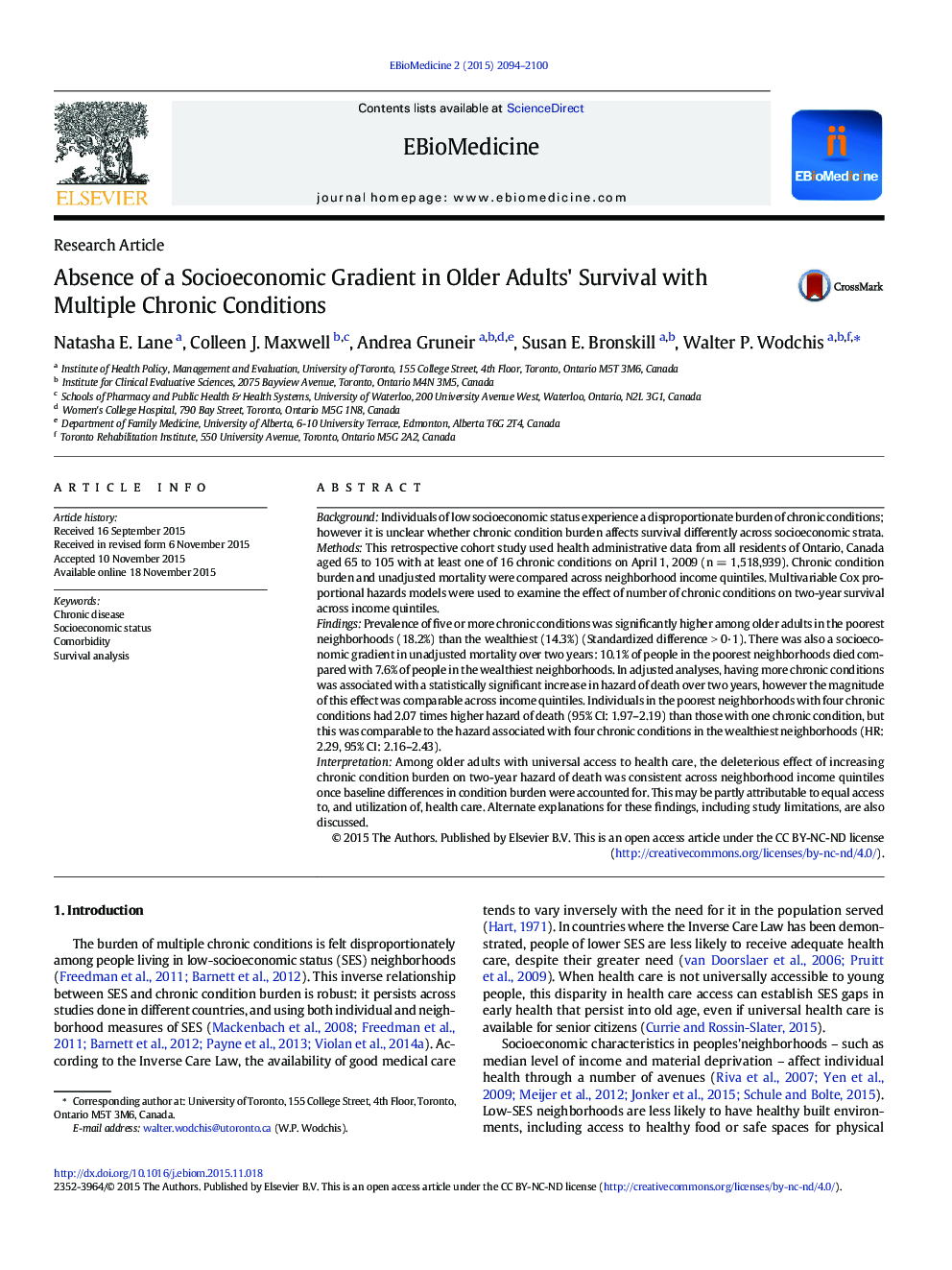| کد مقاله | کد نشریه | سال انتشار | مقاله انگلیسی | نسخه تمام متن |
|---|---|---|---|---|
| 2121090 | 1085768 | 2015 | 7 صفحه PDF | دانلود رایگان |
• Older Canadians in poor neighborhoods have more chronic conditions than those in wealthy ones.
• Survival among older Canadians with two or more chronic conditions is comparable across wealthy and poor neighborhoods.
• Universal health care may flatten socioeconomic gradients in occurrence of – and survival with – chronic disease.Even in a population of older adults with universal access to health care, significantly more people in low-income neighborhoods have multiple chronic conditions than those in wealthy neighborhoods. But once older adults have two, three, four, or five-plus chronic conditions, their survival over two years is comparable, regardless of the neighborhood in which they live. We conclude that access to universal health care does not eliminate socioeconomic disparities in the occurrence of chronic conditions; however, once older adults are diagnosed with multiple chronic conditions, universal health care may flatten socioeconomic gradients in health care utilization and survival.
BackgroundIndividuals of low socioeconomic status experience a disproportionate burden of chronic conditions; however it is unclear whether chronic condition burden affects survival differently across socioeconomic strata.MethodsThis retrospective cohort study used health administrative data from all residents of Ontario, Canada aged 65 to 105 with at least one of 16 chronic conditions on April 1, 2009 (n = 1,518,939). Chronic condition burden and unadjusted mortality were compared across neighborhood income quintiles. Multivariable Cox proportional hazards models were used to examine the effect of number of chronic conditions on two-year survival across income quintiles.FindingsPrevalence of five or more chronic conditions was significantly higher among older adults in the poorest neighborhoods (18.2%) than the wealthiest (14.3%) (Standardized difference > 0·1). There was also a socioeconomic gradient in unadjusted mortality over two years: 10.1% of people in the poorest neighborhoods died compared with 7.6% of people in the wealthiest neighborhoods. In adjusted analyses, having more chronic conditions was associated with a statistically significant increase in hazard of death over two years, however the magnitude of this effect was comparable across income quintiles. Individuals in the poorest neighborhoods with four chronic conditions had 2.07 times higher hazard of death (95% CI: 1.97–2.19) than those with one chronic condition, but this was comparable to the hazard associated with four chronic conditions in the wealthiest neighborhoods (HR: 2.29, 95% CI: 2.16–2.43).InterpretationAmong older adults with universal access to health care, the deleterious effect of increasing chronic condition burden on two-year hazard of death was consistent across neighborhood income quintiles once baseline differences in condition burden were accounted for. This may be partly attributable to equal access to, and utilization of, health care. Alternate explanations for these findings, including study limitations, are also discussed.
Journal: EBioMedicine - Volume 2, Issue 12, December 2015, Pages 2094–2100
